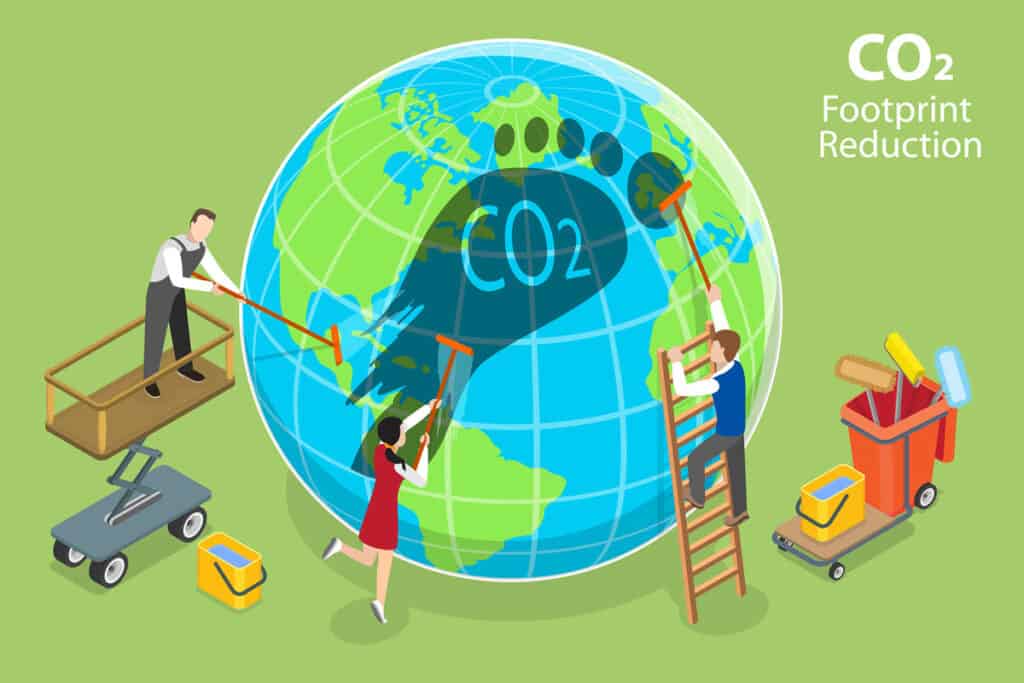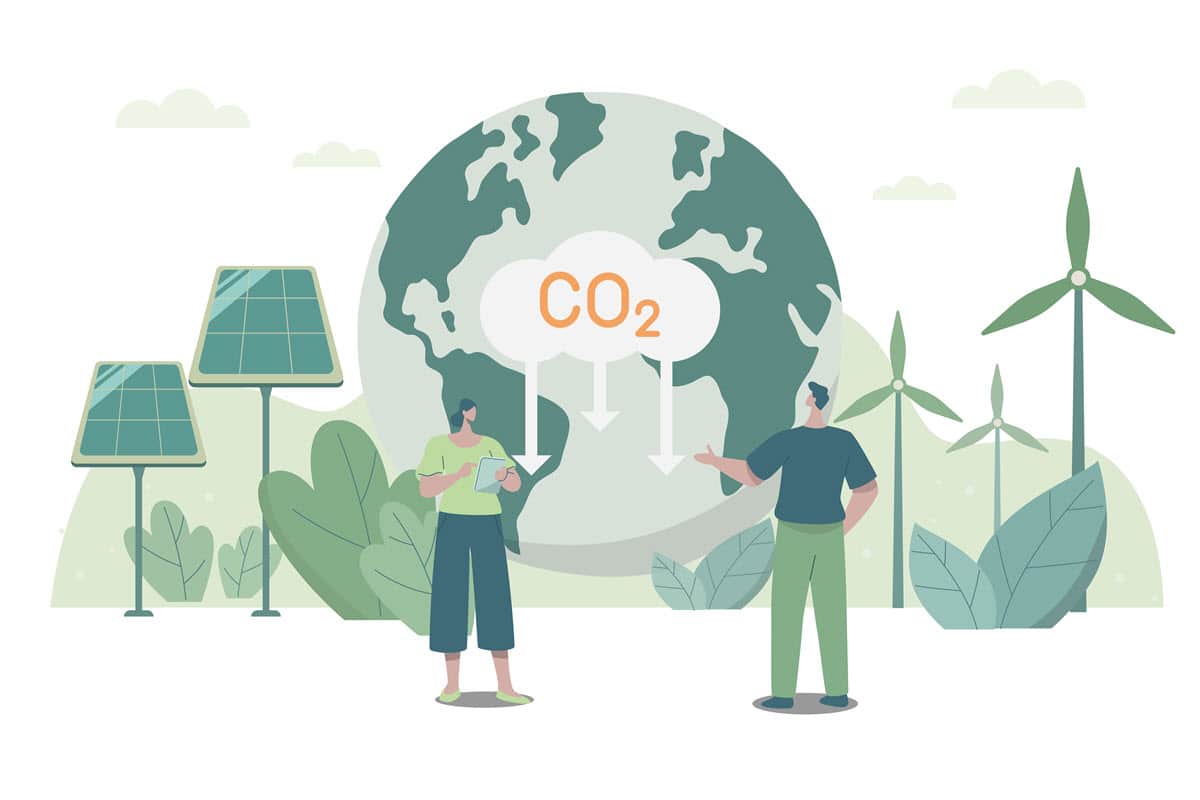Solar generators have emerged as a powerful tool in the fight against carbon emissions. This article explores the significant impact that solar generators can have on reducing our carbon footprint and contributing to a cleaner, more sustainable future.
Understanding Carbon Footprint
Before discussing solar generators’ impact, we need to understand what we mean by “carbon footprint.” A carbon footprint is the total amount of greenhouse gases, primarily carbon dioxide, emitted into the atmosphere as a result of an individual’s, organization’s, or product’s actions. Fossil fuel burning is one of the largest contributors to global carbon emissions.
How Solar Generators Work
Solar generators harness the sun’s power to produce clean, renewable electricity. They consist of solar panels that capture sunlight and convert it into electrical energy, which is then stored in batteries for later use. Depending on the size and capacity of the generator, this stored energy can power various devices and appliances, from small electronics to entire households.
The efficiency of solar generators largely depends on choosing the right solar panels and understanding the role of inverters in solar generators. These components work together to ensure optimal energy conversion and utilization.
The Carbon-Reducing Potential of Solar Generators
Zero Emissions During Operation
Unlike traditional fossil fuel-powered generators, solar generators produce zero emissions during operation. Once installed, they generate electricity without burning fuel, resulting in no direct carbon dioxide emissions. This clean operation is one of the primary reasons solar generators are a key technology in reducing carbon footprints.
Offsetting Grid Electricity
When solar generators replace or supplement grid electricity, they effectively reduce the demand for power from fossil fuel-burning power plants. This displacement of conventional energy sources leads to a significant reduction in carbon emissions. The impact is particularly notable in regions where the electricity grid relies heavily on coal or natural gas.
Lifecycle Emissions Comparison
While the production of solar panels does involve some carbon emissions, solar energy’s overall lifecycle emissions are far lower than those of fossil fuels. Studies have shown that solar panels typically offset their production emissions within 1-4 years of operation, after which they continue to produce clean energy for decades. This long-term benefit significantly outweighs the initial carbon cost of manufacturing.
Reducing Dependence on Fossil Fuels
Solar generators help reduce our overall dependence on fossil fuels by providing a clean alternative to diesel or gasoline-powered generators. This shift is crucial for long-term carbon reduction strategies and contributes to energy independence.

Quantifying the Impact
To understand the scale of impact, let’s consider some numbers:
- A typical solar panel system can offset about 1.5 to 2 metric tons of carbon dioxide annually.
- Over its lifetime (25-30 years), a single solar panel can offset 10-30 tons of carbon dioxide.
- Solar energy produces about 50g of CO2 per kilowatt-hour compared to 975g for coal and 550g for natural gas.
These figures demonstrate the substantial carbon-reducing potential of solar generators over their operational lifetime.
Applications and Their Impact
Residential Use
Home solar generators can significantly reduce a household’s carbon footprint. By powering appliances and electronics with solar energy, families can reduce their reliance on grid electricity, much of which is still produced from fossil fuels in many regions. Maximizing efficiency and optimizing solar generator performance can further enhance this impact.
Portable and Emergency Power
Portable solar generators offer a clean alternative to gas-powered generators for camping, outdoor events, and emergency situations. This reduces emissions and eliminates the need for fuel transportation and storage. The versatility of these portable units makes them an excellent choice for reducing carbon footprints in various scenarios.
Off-Grid Communities
Solar generators provide a sustainable power solution in remote areas without access to the power grid. This prevents the need for diesel generators, often the default choice in such locations. Solar generators can significantly reduce the carbon footprint of these communities while providing reliable power.
Supplementing Grid Power
Even when not used as the primary power source, solar generators can supplement grid electricity during peak hours, reducing the strain on power plants and lowering overall emissions. This application of solar generators contributes to a more balanced and environmentally friendly energy mix.
Challenges and Considerations
While the impact of solar generators on reducing carbon footprint is significant, there are some challenges to consider:
- Initial Cost: Solar generators can be expensive upfront, though prices are continually decreasing. A thorough cost-benefit analysis of owning a solar generator can help make an informed decision.
- Weather Dependence: Solar generation is affected by weather conditions and seasonal variations, which can impact consistent power production.
- Storage Limitations: While battery technology is improving, it still has limitations in capacity and lifespan. Effective solar generator power management and load balancing can help mitigate these limitations.
- Manufacturing Emissions: The production of solar panels does involve some emissions, though these are offset over the panel’s lifetime.
Future Prospects
The future of solar generators in carbon footprint reduction looks promising:
- Technological Advancements: Ongoing improvements in solar panel efficiency and battery technology will further enhance the impact of solar generators.
- Integration with Smart Grids: Solar generators could play a crucial role in decentralized smart energy grids, optimizing energy use and reducing emissions.
- Policy Support: Increasing government incentives and policies supporting renewable energy will likely accelerate the adoption of solar generators.
Conclusion
Solar generators represent a powerful tool in our arsenal against climate change. By providing clean, renewable energy, they offer a practical and effective means of reducing our carbon footprint. As technology advances and adoption increases, the positive impact of solar generators on our environment is set to grow exponentially.
While challenges remain, the potential of solar generators to contribute to a sustainable, low-carbon future is undeniable. As individuals and communities increasingly turn to solar power, we move closer to a world where clean energy is the norm, not the exception.
To fully leverage the benefits of solar generators, it’s important to stay informed about the latest developments and best practices. Comparing top solar generator brands can help in choosing the most efficient and effective solutions. Additionally, following solar generator maintenance tips and best practices ensures that these systems continue to operate at peak efficiency, maximizing their positive impact on carbon footprint reduction.

Leave a Reply